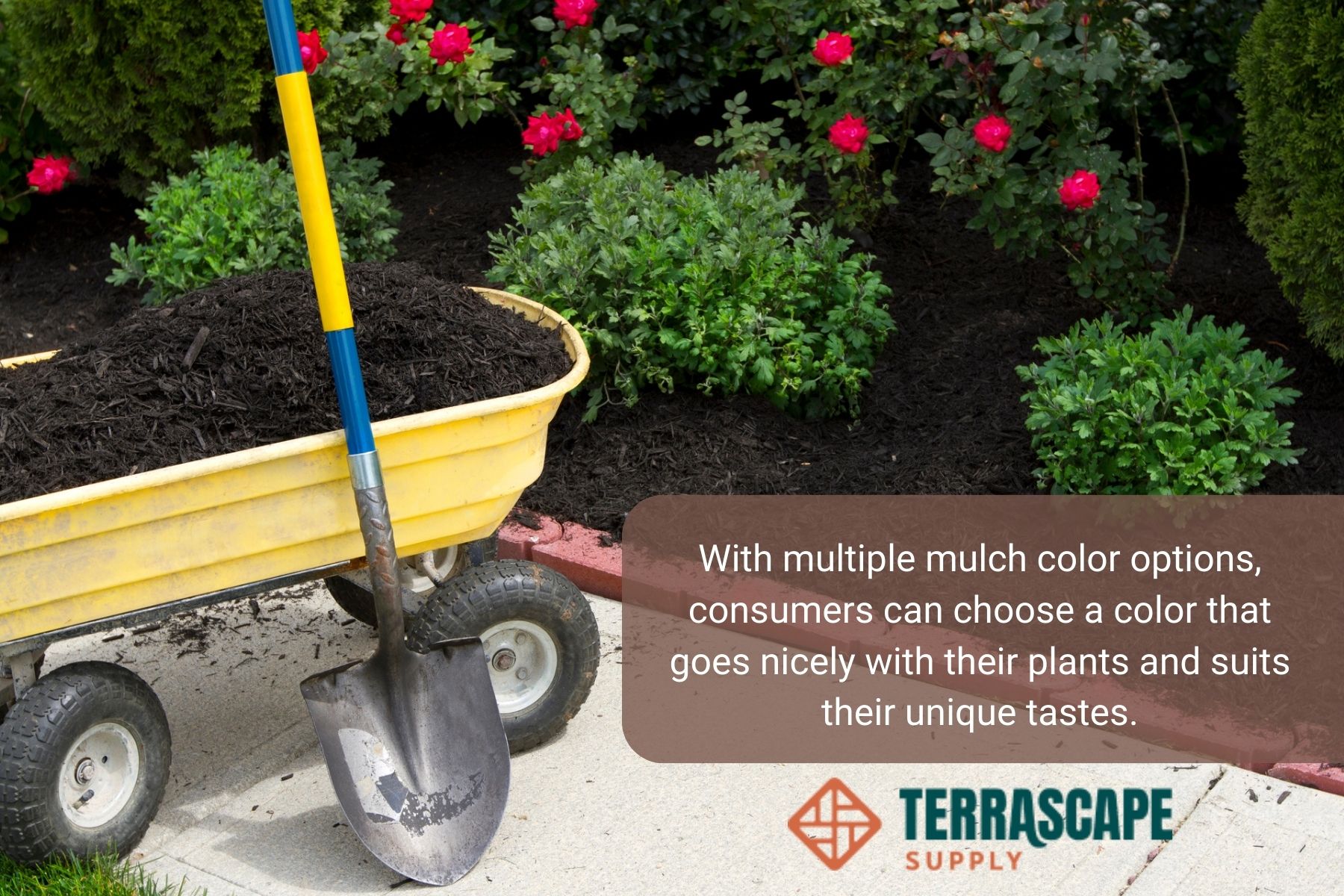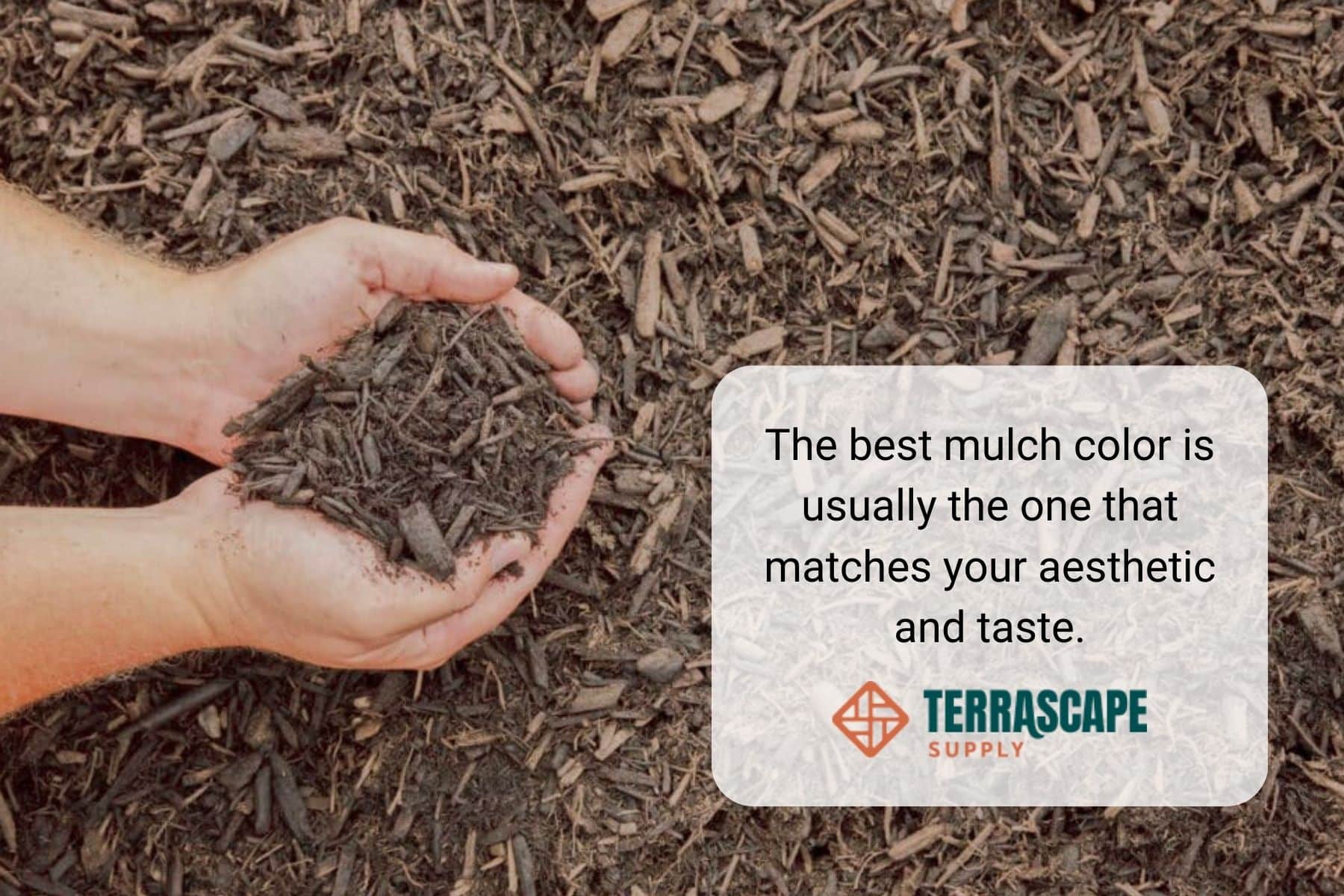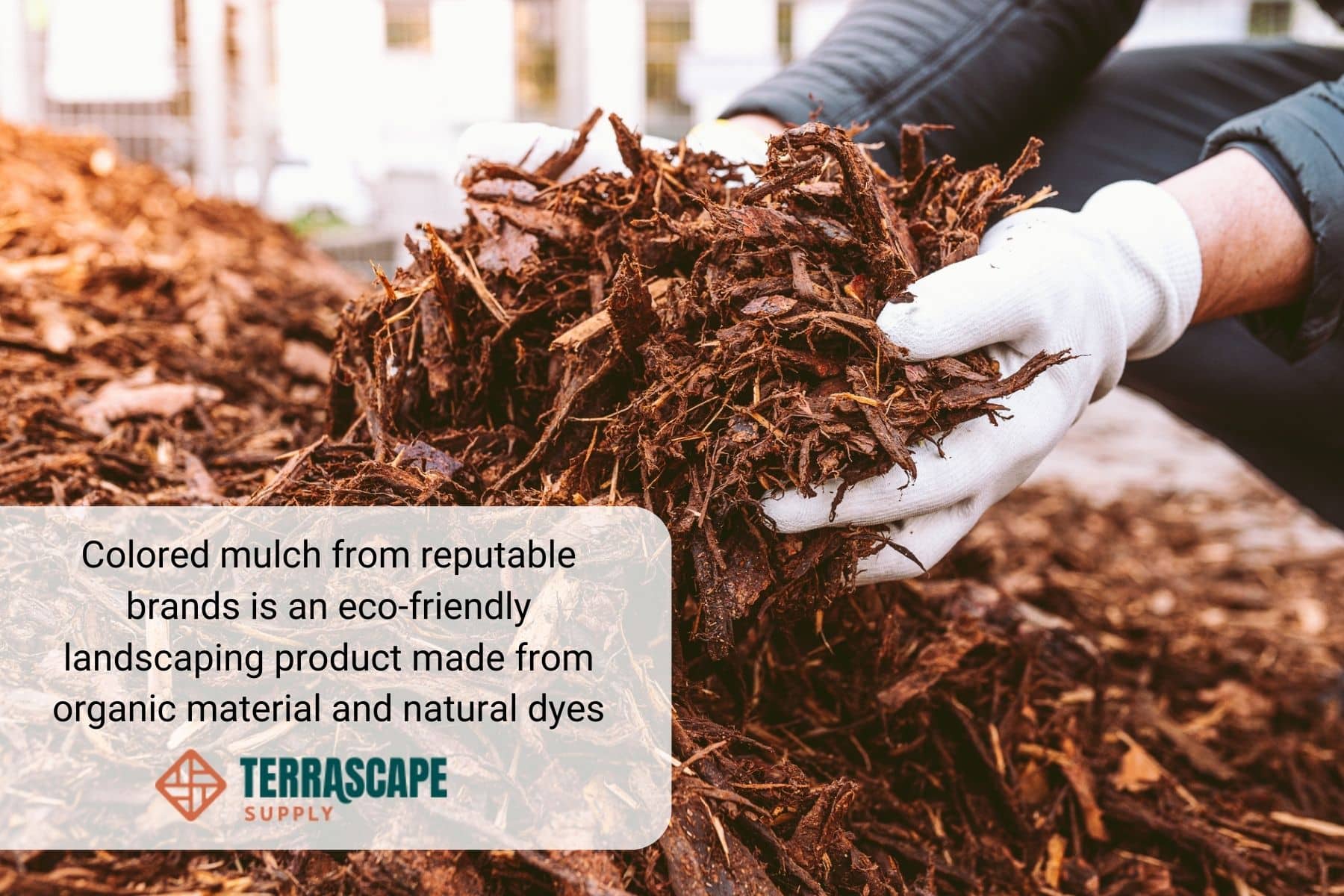The Art of Mulch:
Using Colors to Enhance Your Landscape
If you’ve ever spent time carefully crafting your garden landscape, you’re aware of the many benefits of mulch. Mulch retains moisture, suppresses weeds, and improves soil health, making it integral to your garden’s flourishing.
Mulch also keeps your yard looking tidy and beautiful. But when you purchase mulch to improve your landscaping, the many color options may cause you to ask questions like, what color should I choose? Are some colors better than others? Should I be worried about dyed mulch?
We’re here to help! At Terrascape Supply, we know that sometimes picking a mulch color can be daunting. We’re here to answer your mulch color questions and help you choose the color that’s right for you
What is Mulch?
When you think of “mulch,” you probably picture bark mulch or a similar mulch made from organic matter.
However, “mulch” is a much broader term than that, encompassing pretty much any material spread in gardens, landscapes, or around plants to conserve soil moisture, suppress weed growth, regulate soil temperature, and improve the soil’s overall health.
For example, you can use grass clippings, cardboard, landscaping fabric, gravel, and straw as mulch.
For the sake of this article, when we refer to “mulch,” we mean an organic mulch made from bark or other woody materials (unless otherwise specified).
(You can read a more in-depth explanation of mulch here: A Simple Guide to Mulch: Plus Our Top Seven Mulching Tips!)
Why is Some Mulch Artificially Colored?
Mulch has a dual purpose: it improves the soil and instantly gives garden beds a crisp, polished look. Nothing makes such an enormous, immediate impact as spreading mulch.
Still, that put-together look fades after a while as the natural color of the mulch fades in the sun and leaves your garden beds looking straggly once again.
Dyed mulch fixes this problem with natural dyes that don’t fade as quickly, so your garden beds look nicer for longer. Uncolored mulch often has some color variety, but the dye gives the mulch a uniform color for a neater look.
With multiple mulch color options, consumers can choose a color that goes nicely with their plants and suits their unique tastes.

How is Mulch Colored?
Have you ever looked at the color of mulch and wondered how it came to have that color?
Let’s explore how mulch is colored.
Natural Aging
Not all mulch is dyed. Some mulch goes through an aging process before it's sold, where microbes begin to break down the wood matter. This aging process gives the mulch a uniform color—typically a rich dark brown. It also means the mulch is ready to release organic compounds directly into your soil!
Iron Oxide
Red mulches are dyed with iron oxide, giving them that signature rust-red color. Iron oxide is abundant in nature—if you’ve ever seen giant red rocks in Arizona, rich red soil in the Southeast, or even your own blood, you’ve seen iron oxide!
Because iron oxide is everywhere, it’s considered a 100% safe way to dye mulch.
Carbon
Black mulch is colored with carbon. Think of the black layer on burned toast or the soot that accumulates in your chimney—that deep black material is the same stuff that colors black-dyed mulch!
Vegetable Dyes
Besides black and red mulches, you’ll also find brown-dyed mulches on the market. These mulches use different coloring agents that vary based on the manufacturer. However, since mulch is intended to break down and build up the soil, these dyes are made from vegetables rather than manufactured chemicals.
Remember: while synthetic dyes could keep mulch fade-free longer, it’s not worth it to reputable manufacturers. Dyed mulch is supposed to break down and improve the soil, and using synthetic dyes could jeopardize that.
Are Some Mulch Colors Better than Others?
Beyond personal preference, mulch color doesn’t make a lot of difference. Whether your mulch is light, dark, red, or black, it retains moisture, suppresses weeds, and improves the soil.
However, darker mulch absorbs more heat from the sun than lighter-colored mulch. A dark mulch may benefit your plants if you live in a colder climate, but if you live in a hot environment, the extra heat may stress your plants, and a lighter-colored mulch may be a better option.
In general, however, the differences are slim. The best mulch color is usually the one that matches your aesthetic and taste.

Do Mulch Colors Fade Over Time?
Yes, mulch colors fade over time as the mulch breaks down. This is a good thing—mulch is supposed to break down and nourish your soil.
If you want mulch that resists fading, your best option is a dyed mulch from a reputable manufacturer. Although the mulch will still fade and break down eventually, the high-quality dye will provide enough fade resistance to keep your lawn fresh and neat with little maintenance work!
Is Colored Mulch Eco-Friendly?
Yes, colored mulch from reputable brands is an eco-friendly landscaping product made from organic material and natural dyes, and it’s designed to break down and nourish the soil.
Note: Some mulch is made from recycled scrap wood or yard waste. Although recycling is generally eco-friendly, if the recycled wood is treated with synthetic chemicals, those chemicals may leach into your soil. If you’re considering buying recycled wood mulch, ask your distributor to confirm that it’s made from untreated wood products.

What Mulch Color Should I Choose for My Landscaping?
Maybe you’re drawn to one particular mulch color over another, or perhaps you’re completely lost as to what mulch colors you should choose. Here are some tips for choosing the best mulch color for your landscaping.
- If you’re going for a rustic, woodsy, or natural look, go with a natural brown mulch.
- If you want a long-lasting neutral backdrop for your garden beds, choose dyed brown mulch.
- Dyed red mulches provide a striking contrast to green grass, trees, and shrubs.
- Dyed black mulch gives your garden beds a modern, sophisticated look. However, since black mulch absorbs heat, be careful if you live in a hot climate.
- For non-ornamental garden beds, such as vegetable gardens, prioritize function over aesthetics. Try mulching with mushroom compost, grass clippings, or straw.
- Finally, flip through some gardening magazines or look at landscape inspiration on Pinterest to see what mulch colors appeal to you!
How Terrascape Supply Can Help
At Terrascape Supply, we want to help you create an outdoor space you love!
That’s why we sell a variety of mulch colors, so you can always find the color and type of mulch that fits your aesthetic. We sell dyed and undyed options, but never fear—our dyed mulches are colored with entirely safe, natural materials!
Besides mulch, we also sell an assortment of other garden and landscaping supplies, such as:
If you live in central Pennsylvania, stop in and see us in Hollidaysburg! As a small, family-owned business, good customer service is our top priority, and we’d love to help you with all your landscape supply needs.
We also deliver mulch, compost, dirt, and stone to much of central and south-central PA.
Contact us to schedule a delivery or to ask questions about mulch types or other gardening issues—we’re excited to hear from you!






